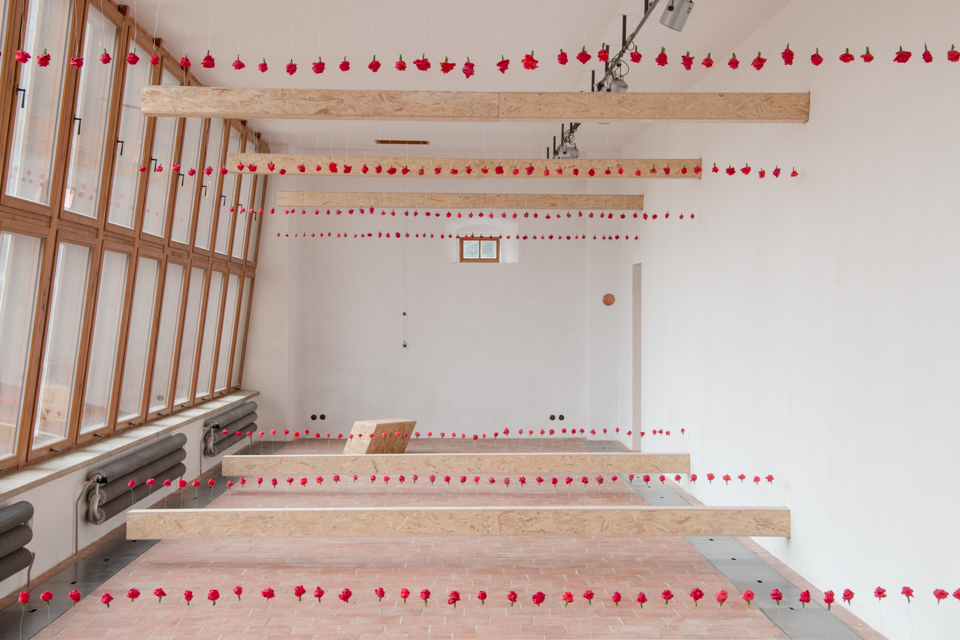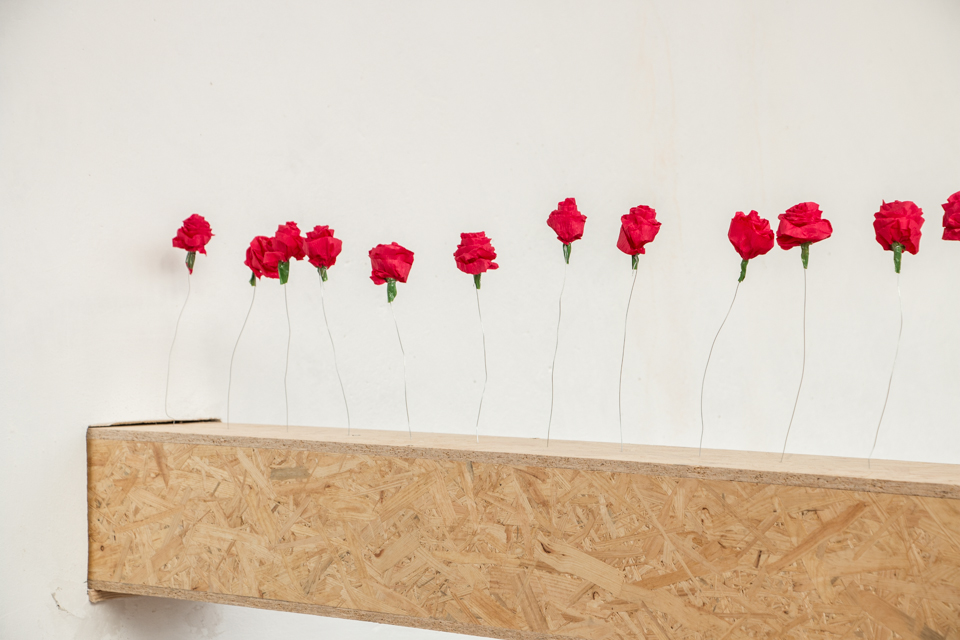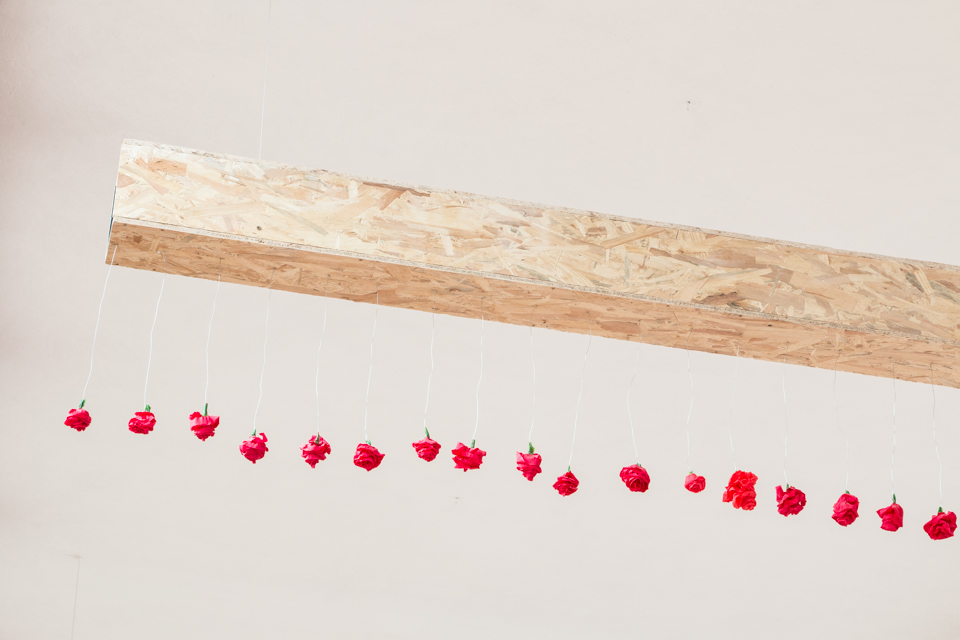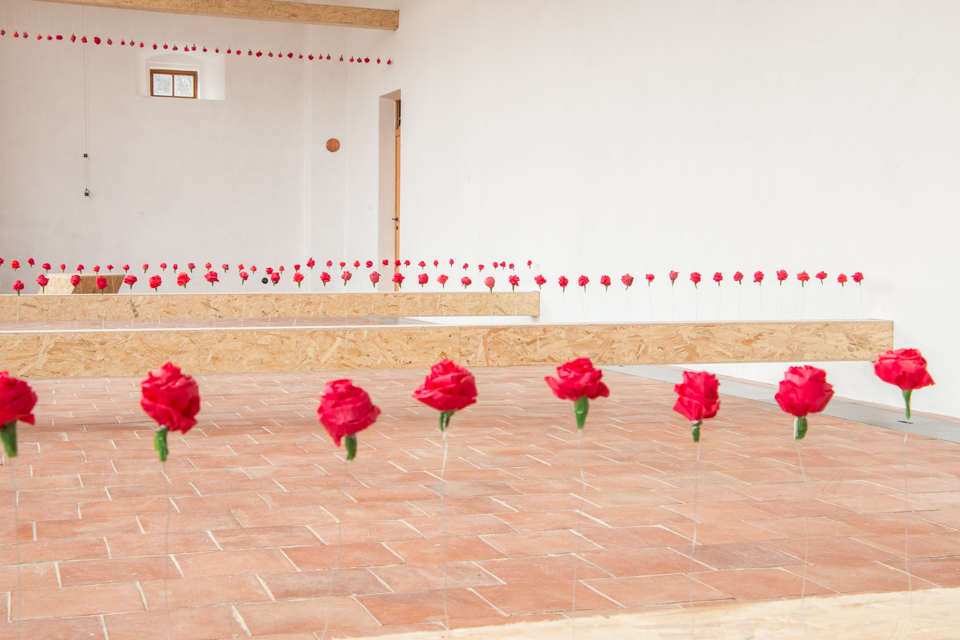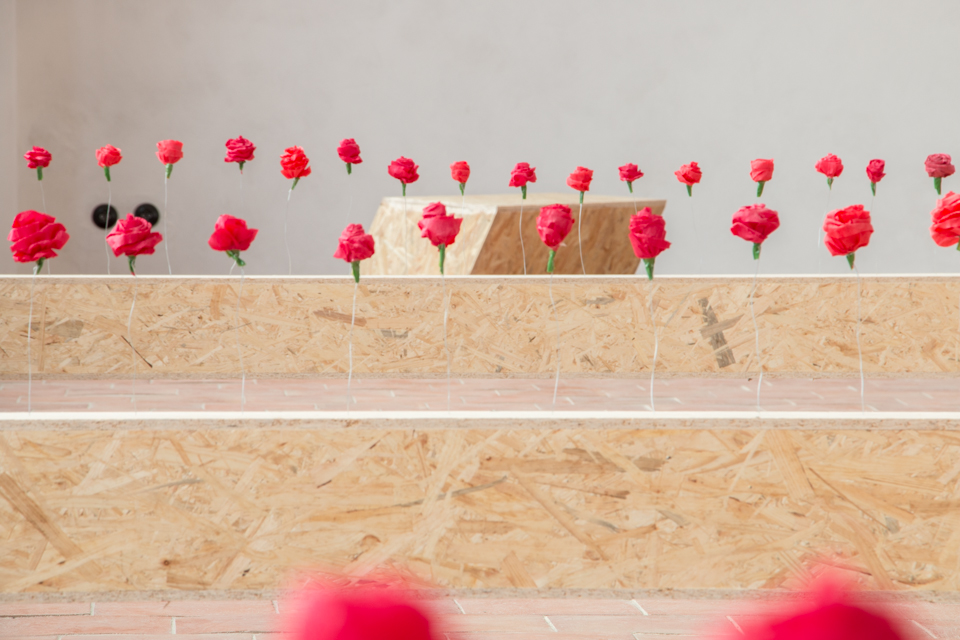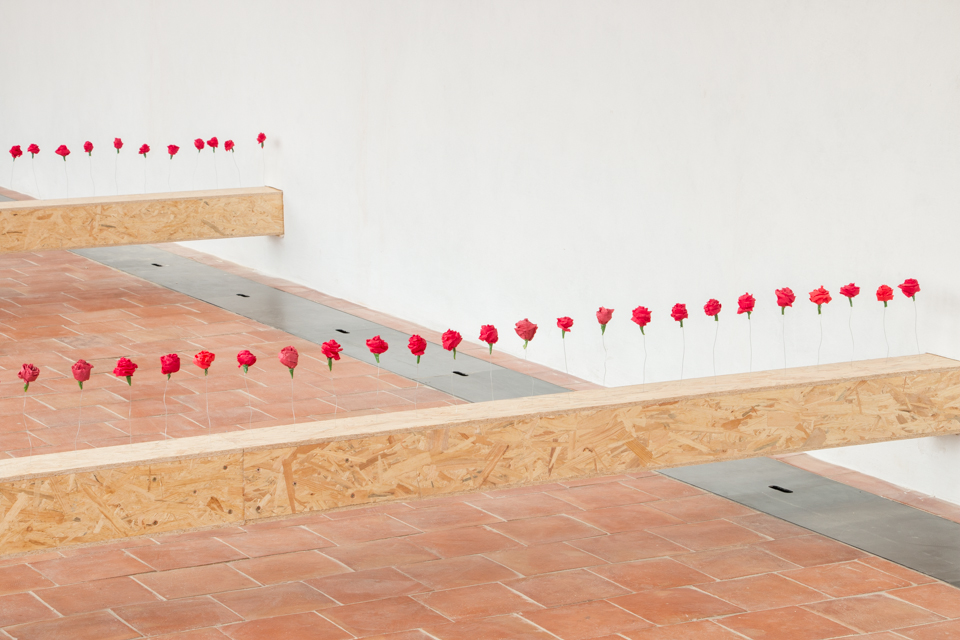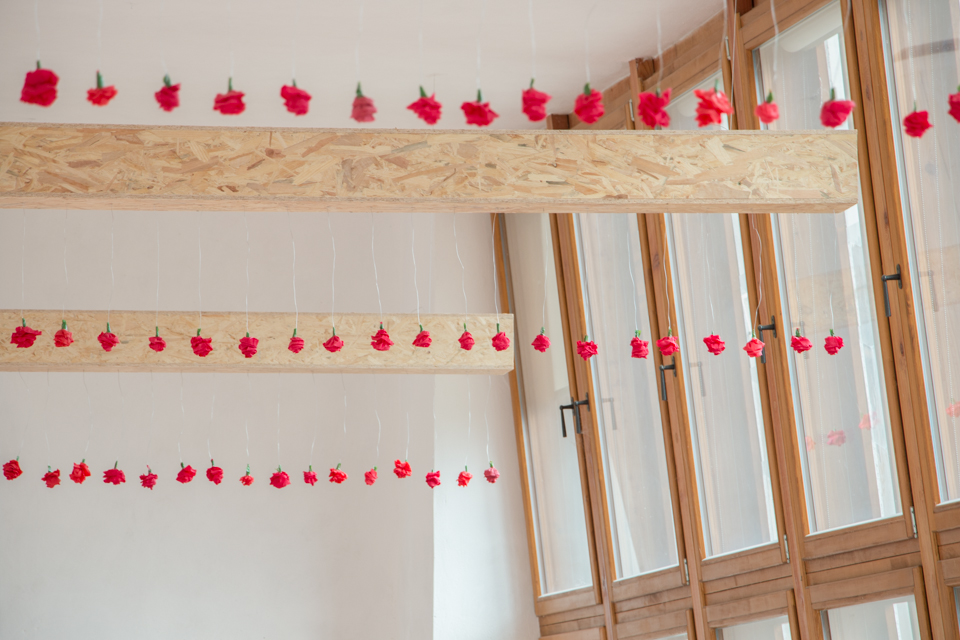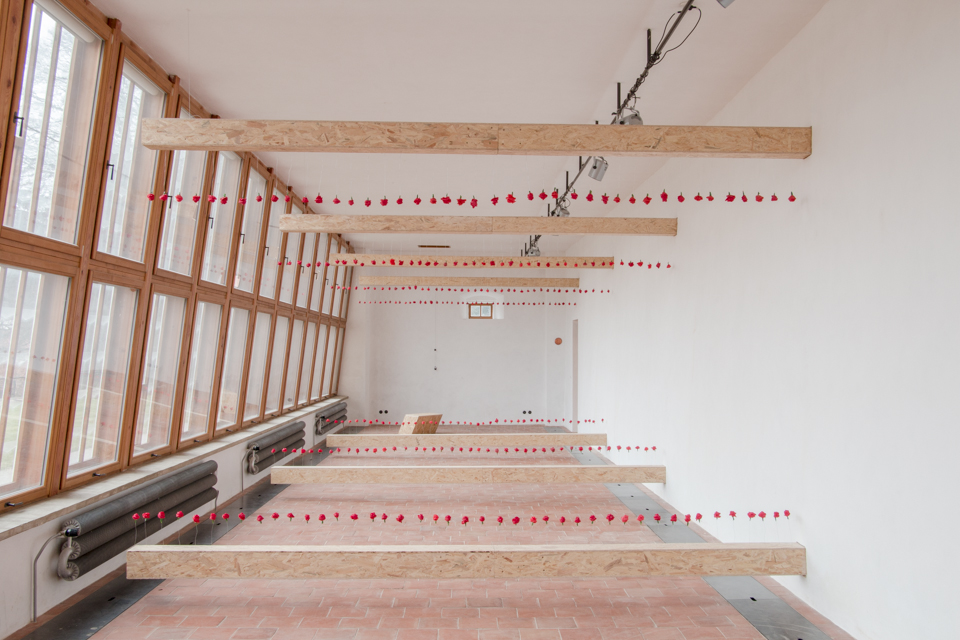Under the Sign of the Beam and Roses
Tomáš Knoflíček a Libor Novotný
15.01. – 15.02.15
“The name … has been derived from the sign of the Břevnov-Broumov Archabbey. The sign is combined; in the right part of the coat of arm there is … an Indian ladder (a beam, more precisely a strong branch with stumps); in the left part there are three … inclined beams (stripes), the middle one with three … roses inside. The escutcheon with the Indian ladder (a beam, in Czech “břevno”) reminding of the name of the place is the sign of the abbot, the left one, linked to the dynasty of the founders (the Slavníks), belonged to the prior and the convent.”
Milada Vilímková – Pavel Preiss, Ve znamení břevna a růží. Historický, kulturní a umělecký odkaz benediktinského opatství v Břevnově (Under the Sign of the Beam and Roses. Historical, Cultural and Artistic Heritage of the Benedictine Abbey in Břevnov), Prague 1989.
James Elkins writes in one of his studies on contemporary art about religion that discussing this issue seriously and without irony is today very complicated and rare.1 For many centuries, art was actually linked to a spiritual experience, ritual or prayer. However, with the rise of the modernism, any work of art with religious (i.e. Christian, in our Euro-Atlantic region) message has recently become a priori suspicious. Naturally, we do not need to add that the church paid this mistrust back by considering modern art suspicious. The irony is that this “break-up” had negative effects on both sides, as it was the separation of religion and “contemporary art” (presuming that every art was once contemporary) that made both actors turn towards the trend of unavoidable marginalisation of their role in the life of the modern (amend prefixes post-, hyper- as you like) man.
The causes of this separation are many. One of the crucial ones seems to be the fact that art, trying to “break free”, tried to compete with faith. It was no longer satisfied with mere interpretation – the less with illustration – but it was searching for answers and offered solutions, which was totally different from what Christianity had to offer. Modern art and religion have totally opposing views when it comes to soteriology. While Christian doctrine postpones our salvation to a – more or less – distant future in the life to come, the avant-garde, being fundamentally leftist for the whole 20th century, always endeavoured to make salvation achievable in this life and to draw it nearer to the present.
In the fist place, this locally specific installation Under the Sign of the Beam and Roses may thus be understood as a message about this state of mutual estrangement.2 Although it uses the genius loci of the Břevnov Monastery, where “provident and polished selection of architects and other artists, particularly during the Baroque, led to building a monastery of unique value and significance“3, it does so in a somehow subversive manner rather than with empathy. The installation actually represents the sign of the Břevnov Monastery, only dispersed in space and fragmented: the monastery was built using common materials and banal or even kitsch objects to which a kind of symbolic value was ascribed, besides the illustration itself. Instead of a seriously conceived issue, it is rather a quasi-game with Baroque iconography, emblematics or heraldry, where e.g. OSB desks turn into a Benedictine order (Ordo Sancti Benedicti – OSB) or cheap decoration of paper roses reminding us of vanitas, i.e. the transience of all things.
Nevertheless, these motifs may also refer to the premises where they are actually installed. The beams around remind us of the alarming state the Baroque orangery was once in, when the building was on the brink of going to rack and ruin during the period of building socialism as a consequence of inexcusable indifference, and the same logic applies to “heraldic” roses that turn into a local reference to the former function of the building, i.e. a greenhouse. After all, the main message of the installation is the bare truth that the orangery (built by Kilián Ignác Dienzenhofer in the times of Otmar Zinke, the most significant builder of the Břevnov Monastery) that has metamorphosed into a contemporary art gallery relates to the spiritual life in the monastery only very little. In fact, it documents that instead of mutual collaboration that was once stimulating for religion as well as for art, these two worlds now basically fail to meet.
1. James Elkins, On the Strange Position of Religion in Contemporary Art, New York 2004.
2. One of his greatest critics has been and still is Hans Sedlmayr. See his article Verlust der Mitte (1947); in Czech: Hans Sedlmayr, Ztráta středu
(English: Losing the Middle), Brno 2004.
3. Milada Vilímková – Pavel Preiss, Ve znamení břevna a růží. Historický, kulturní a umělecký odkaz benediktinského opatství v Břevnově, Praha 1989, s. 13.
